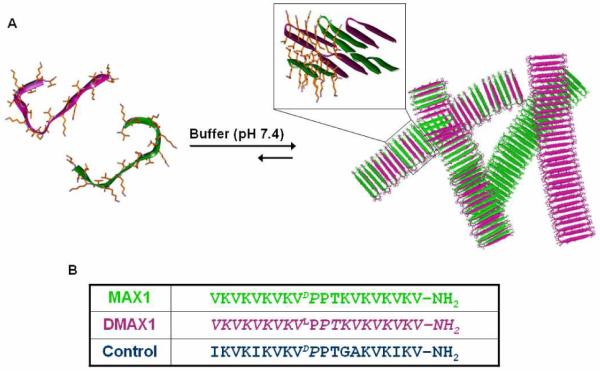Figure 1.

(A) Assembly mechanisms for enantiomeric peptides leading to the formation of a fibrillar network that defines hydrogelation. Enantiomers can either self-sort to form fibrils that are homogeneous with respect to enantiomer (solid colored fibrils) or enantiomers can co-assemble to form a network of fibrils that are heterogeneous with respect to enantiomer (multi-colored fibrils). (B) Sequences of enantiomers MAX1, DMAX1 and the non-isomeric Control Peptide. D-amino acid residues are italicized.
